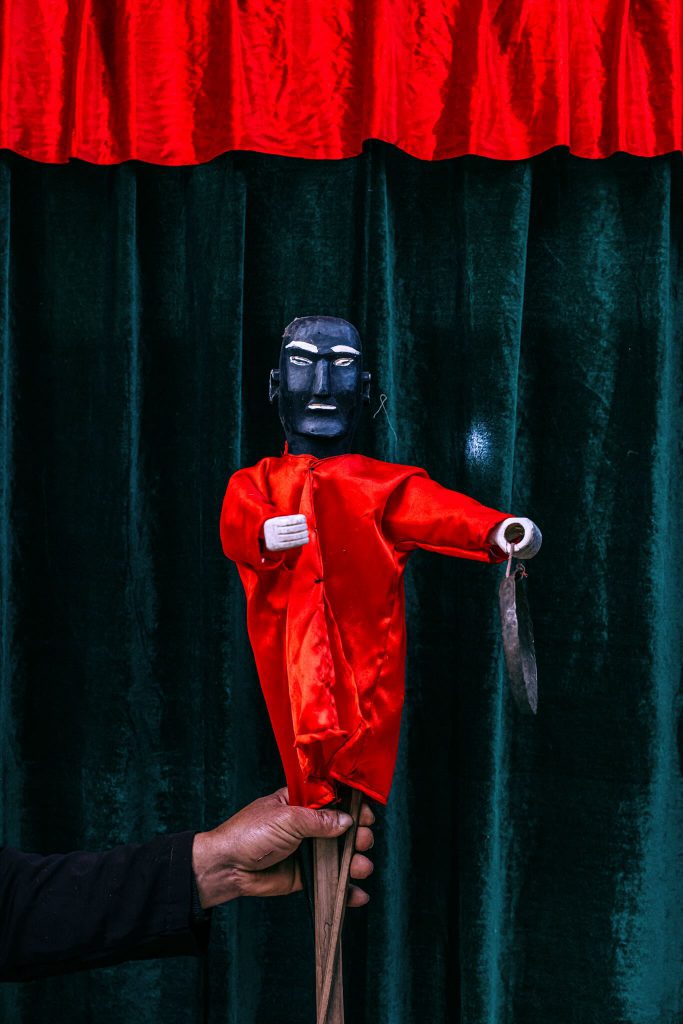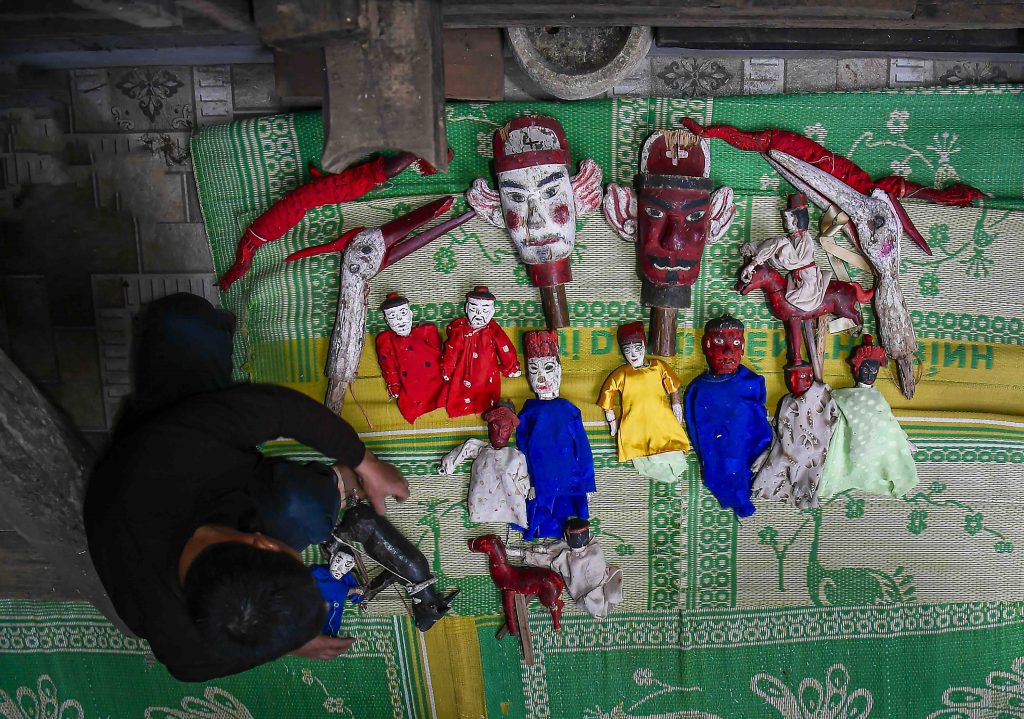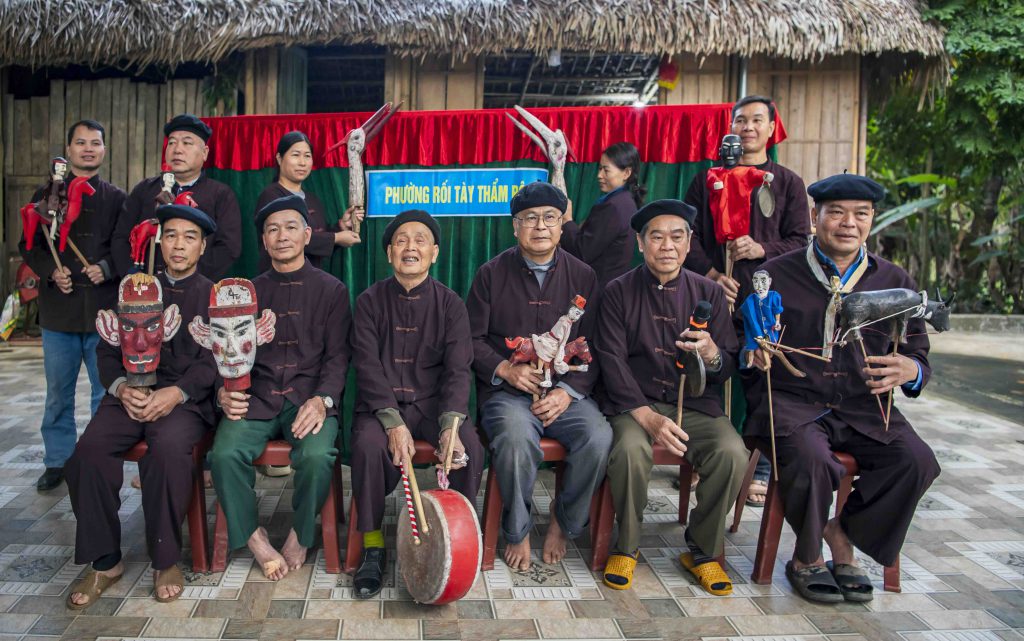Story: Nam Hoa
Photos: Photo Tour Heritage – Thai Nguyen 2024
Dedicated artisans are working to preserve dry puppetry, a remarkable cultural tradition of the Tay people.
Among the rich artistic heritage of the Tay ethnic group, dry puppetry stands out as a unique form of folk art. It vividly portrays scenes from traditional Tay daily life, accompanied by the rhythmic sounds of drums and gongs. The performances are brought to life through giao – narrated introductions and character dialogues that help audiences follow the story and understand the plot.

Today, due to challenges in preserving and passing down this tradition, dry puppetry survives in only a few areas, such as Cao Bang and Thai Nguyen. The most well-known example is the dry puppetry of the Tay community in Tham Roc hamlet, Binh Yen commune, Dinh Hoa district, Thai Nguyen province.
Tham Roc, where wood comes alive on stage
We arrived at Tham Roc’s puppetry venue as the afternoon light began to fade, warmly greeted by artisan Mr. Ma Quang Nhanh. With enthusiasm, he brought out a weathered stack of documents tracing the troupe’s origins, along with giao scripts written in Tay and translated into Vietnamese using lục bát (six-eight) verse or rhymed prose.
He proudly told the story of his ancestor, Ma Quang Ninh, who, more than 200 years ago, traveled to Tuyen Quang to learn the art of puppetry. Since then, each generation has expanded the tradition, adding new puppets and scripts to their growing repertoire.
As Mr. Ma Quang Nhahn spoke, other troupe members busily prepared for the evening’s show, setting up the stage and unpacking wooden chests filled with their treasured puppets.

The stage is a simple setup: a metal frame covered with curtains on all sides. Behind the curtain, the puppet masters of the Tham Roc troupe control the puppets using sticks and rods attached to their lower bodies, creating lively and expressive movements. The musicians and narrators, who perform the giao scripts, also sit behind the curtain.
A typical performance begins with The Gecko Puppet, which tells the story of a gecko and a Tay man carrying a knife at his waist. The man climbs a tree to catch the gecko and raise it. According to Tay beliefs, the gecko can predict the weather, helping farmers plan their crops. The chase unfolds through dynamic puppet actions—climbing, sliding, leaping—performed with remarkable skill. The scene is brought to life with the rhythms of woodblocks, gongs, and drums, shifting between intensity and calm, and accompanied by giao verse:
“Now he gives thanks to the Gecko
Wants to climb up, bring it home to care
Let Gecko help the land and village
To guide the rains and sun, harvests plenty to spare.”
We were completely absorbed in the performance, losing all sense of time and place. The artists, deeply immersed in their roles, brought every gesture and line to life, portraying scenes from everyday Tay life, like farmers and buffaloes ploughing the fields, all imbued with the soul of the countryside.

The artisans who animate wood
At the end of the show, the troupe members carefully disassembled the puppets, packing them into wooden chests polished by time. Mr. Ma Quang Nhanh explained that the original set included just six puppets, the two largest being the Father puppet (with a red face) and the Mother puppet (with a white face). Over the generations, more characters – both human and animal – were added.
The puppets are made from Holarrhena pubescens, a local mountain tree valued for its soft, smooth texture and natural resistance to termites, which ensures their durability. Once suitable wood is selected, it takes about three to five days to complete a puppet. The process includes carving, painting with natural pigments such as lime, soot, turmeric root, and brown tubers, and crafting costumes. Finally, the parts are assembled using interlocking latches to create movable joints, allowing the puppets to be animated smoothly during performances.
The troupe’s puppet artisans not only pour their hearts into designing and crafting each figure but truly breathe life into what were once blocks of wood. Over time, the puppets seem to come alive. Before performing far from home, troupe members hold a ritual to seek blessings from their ancestral masters, asking for safe travels and a successful show.
During the Tay people’s annual Long Tong Festival and other festive occasions, performances by the Tham Roc Puppet Troupe always draw large crowds, including local villagers and visitors from farther afield. The troupe has also traveled to perform in many regions across Vietnam.
With its distinctive cultural identity, the dry puppetry of the Tay people in Tham Roc hamlet (Binh Yen commune) and Ru Nghe hamlet (Dong Thinh commune), Dinh Hoa district, Thai Nguyen province, has been officially recognized by the Ministry of Culture, Sports and Tourism as a National Intangible Cultural Heritage. This recognition provides an important foundation for preserving and promoting this traditional folk art, helping to ensure its legacy continues for generations to come.










